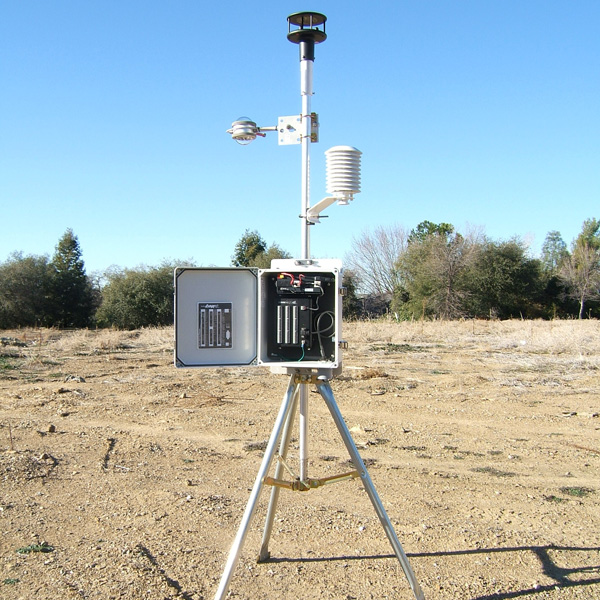Comparing the Best Weather Stations of 2024: What Sets Them Apart?
Comparing the Best Weather Stations of 2024: What Sets Them Apart?
Blog Article
Discovering the Different Kinds Of Specialist Weather Terminals for Accurate Information Collection
When it comes to selecting the proper weather condition terminal for information collection, the market provides a variety of options customized to various needs and setups. Let's discover the subtleties of these specialist weather stations to understand their special capabilities and figure out the best fit for specific data collection needs.
Digital Climate Terminals
In the world of meteorological instrumentation, digital weather terminals attract attention as sophisticated devices for exact data collection and evaluation. These sophisticated terminals are furnished with sensing units that capture a broad variety of weather condition specifications such as temperature level, moisture, barometric stress, wind rate, and instructions. The information collected by digital weather terminals is sent wirelessly to a central console or a computer system for real-time monitoring and analysis.
One of the crucial advantages of digital climate stations is their capability to offer high-resolution data with accuracy and integrity. This level of precision is crucial for various applications, including farming, research, emergency, and aeronautics feedback. Digital weather condition terminals frequently come with software application that allows users to visualize the information in different formats like graphes and charts, facilitating simpler interpretation and decision-making.
Wireless Weather Terminals
Structure on the capabilities of digital weather stations, wireless weather stations offer enhanced comfort and flexibility in data transmission and monitoring. By utilizing wireless technology, these weather stations eliminate the need for cumbersome wired links, permitting easy setup in numerous areas. The cordless function enables real-time data tracking from remote locations, giving meteorologists and weather enthusiasts with instant access to vital info.
Wireless weather condition terminals commonly are composed of sensors that accumulate data on temperature, moisture, barometric pressure, wind rate, and direction. These sensing units wirelessly transfer the information to a central console or receiver, where it is refined and shown for analysis. Some advanced cordless weather terminals can even attach to the internet, permitting users to access their climate data from another location by means of mobile phones or computer systems.

Prosumer Weather Condition Stations
What differentiates Prosumer Climate Stations from traditional consumer-grade weather condition terminals? Prosumer Climate Stations bridge the void between consumer-grade and professional-grade devices, supplying advanced attributes and greater accuracy than common home weather condition stations. These stations are created for climate fanatics, amateur meteorologists, and tiny businesses that call for even more specific information than what customer versions can provide.
Prosumer Weather Stations frequently include a larger range of sensors to measure extra atmospheric specifications such as UV index, fallen leave dampness, and soil wetness. They also tend to have a higher level of durability and reliability, making them suitable for long-term outside use in numerous ecological problems.


Industrial Climate Terminals
Industrial Weather Stations, additionally referred to as meteorological surveillance systems, are specialized instruments created for specific and robust weather condition data collection in commercial setups. These stations are tailored to fulfill the unique demands of commercial procedures where accurate weather condition details is essential for security, performance, and decision-making processes.
Industrial climate stations are geared up with sophisticated sensing units that can gauge a variety of meteorological specifications such as temperature level, moisture, wind rate and instructions, barometric stress, and rainfall (Weather Stations). These terminals are often ruggedly built to endure extreme ecological problems resource commonly found in industrial environments
One key feature of industrial weather condition terminals is their capability to supply real-time information tracking and analysis. This enables industrial facilities to anticipate weather-related risks, optimize operations based on climate problems, and make sure the safety and security of employees and tools. Furthermore, commercial weather condition stations can be integrated into existing commercial control systems for smooth data administration and automation.
Portable Climate Terminals
As opposed to stationary commercial weather condition terminals, portable weather stations use versatility and flexibility for on-the-go information collection in different environmental setups. These small systems are developed to be conveniently delivered to different locations, making them perfect for area research study, emergency feedback scenarios, agriculture, construction websites, and outdoor occasions.
Mobile weather terminals commonly include sensing units for determining parameters such as temperature level, humidity, barometric stress, wind speed, and wind instructions. Some advanced versions may also include additional sensing units for monitoring rains, solar radiation, and UV levels. In spite of their small dimension, portable weather condition terminals are qualified of providing exact and reputable data equivalent to that of bigger, repaired terminals.
One of the essential advantages of mobile climate terminals is their fast deployment and ease of configuration. Generally, mobile climate terminals are very useful tools for experts needing portable, accurate, and timely weather condition information in varied setups.
Conclusion
To conclude, professional weather condition stations been available in different types such as electronic, cordless, prosumer, industrial, and portable. Each kind provides distinct functions and capacities for accurate data collection. Choosing the best weather station depends on the specific demands and needs of the customer. By recognizing the differences between these types of weather condition stations, individuals can make enlightened choices to guarantee they get the most dependable and precise climate information for their functions.
Structure on the abilities of electronic weather condition terminals, cordless weather condition terminals provide enhanced comfort and flexibility in information transmission and monitoring. Some progressed wireless climate stations can also attach to the web, permitting individuals to access their weather information from another location through smartphones or computers.
Prosumer Climate Stations bridge the gap in between consumer-grade and professional-grade tools, offering even more innovative attributes and higher precision than regular home weather condition terminals. Weather Stations. Overall, portable climate terminals are indispensable devices for professionals needing mobile, exact, and timely weather details in diverse settings
By read this post here recognizing the differences between these types of climate terminals, individuals can make informed decisions to guarantee they obtain the most specific and trusted climate data for their objectives.
Report this page